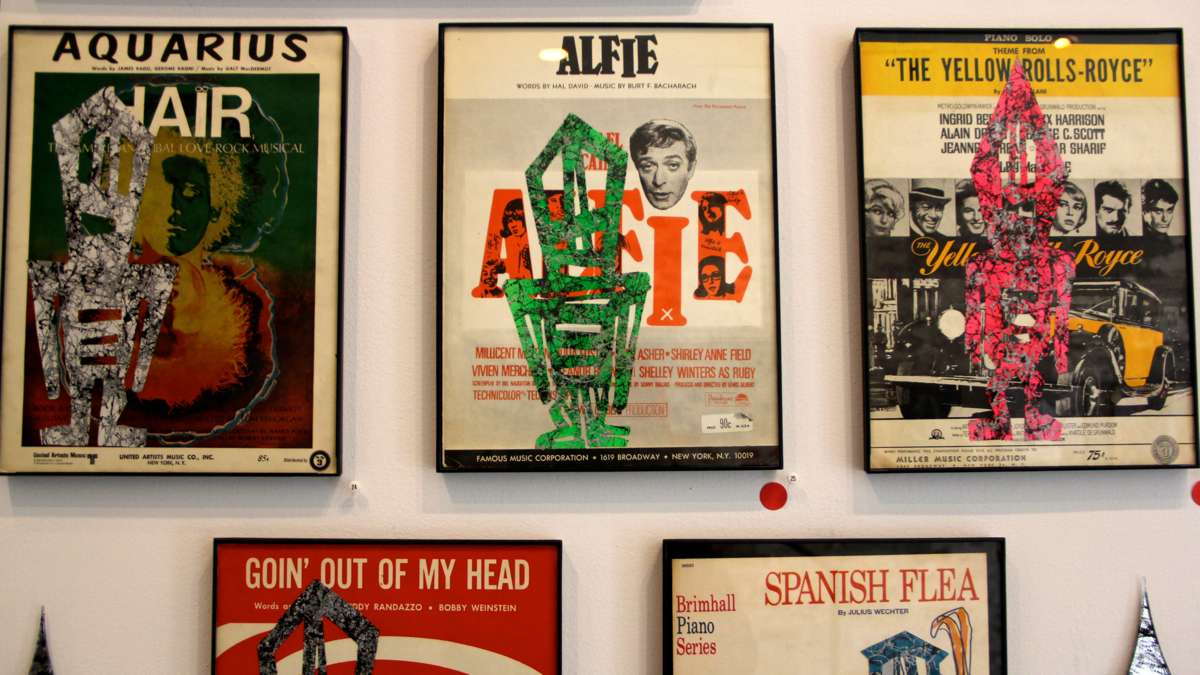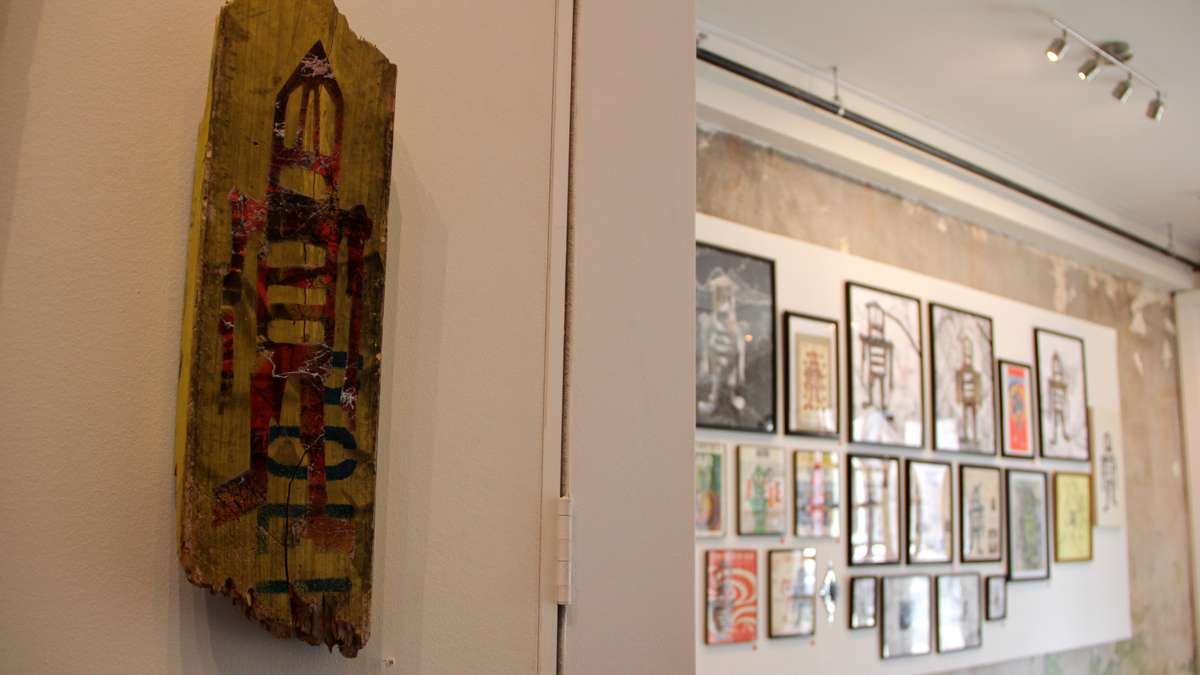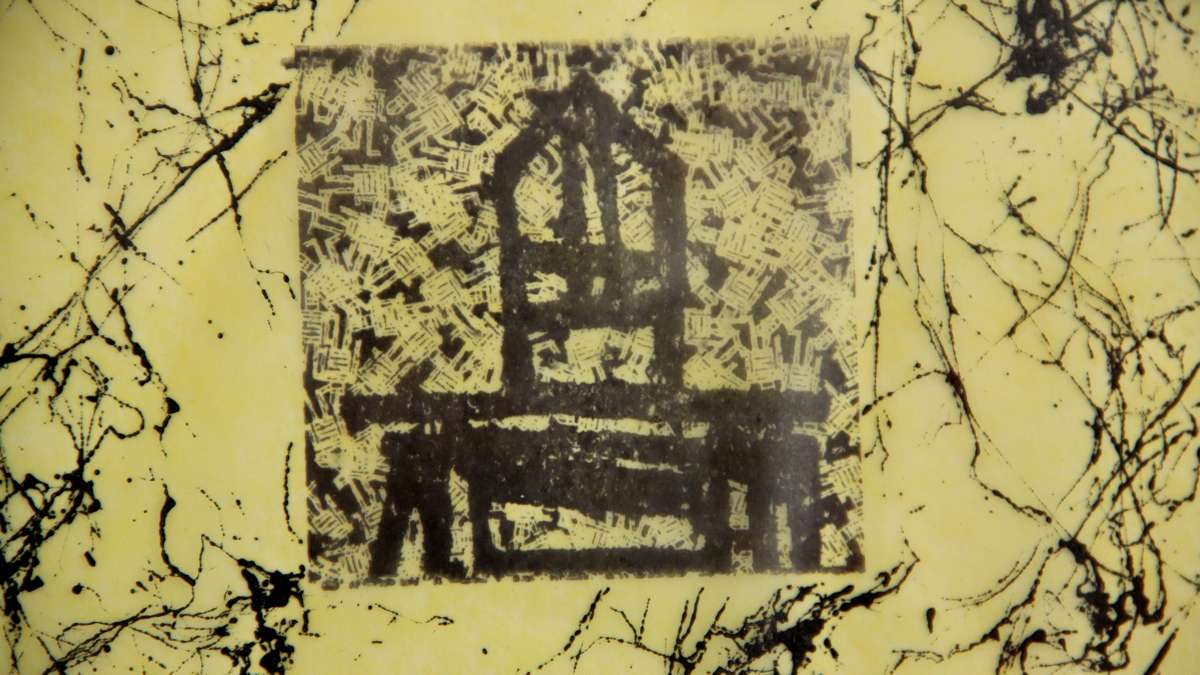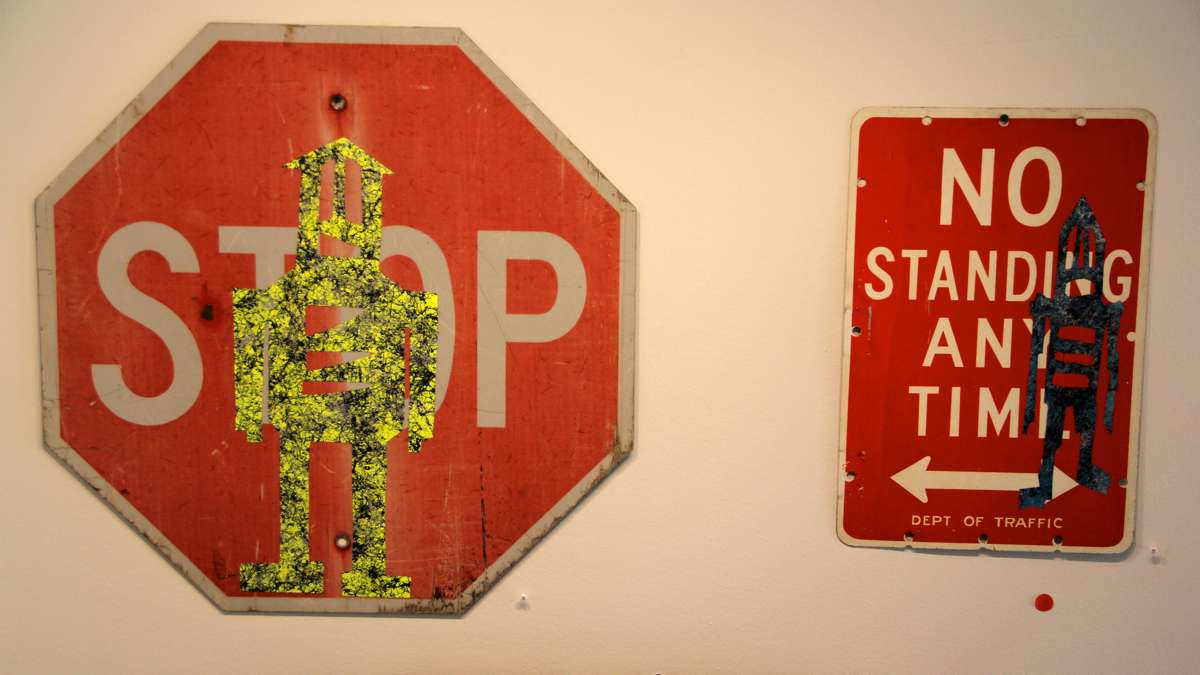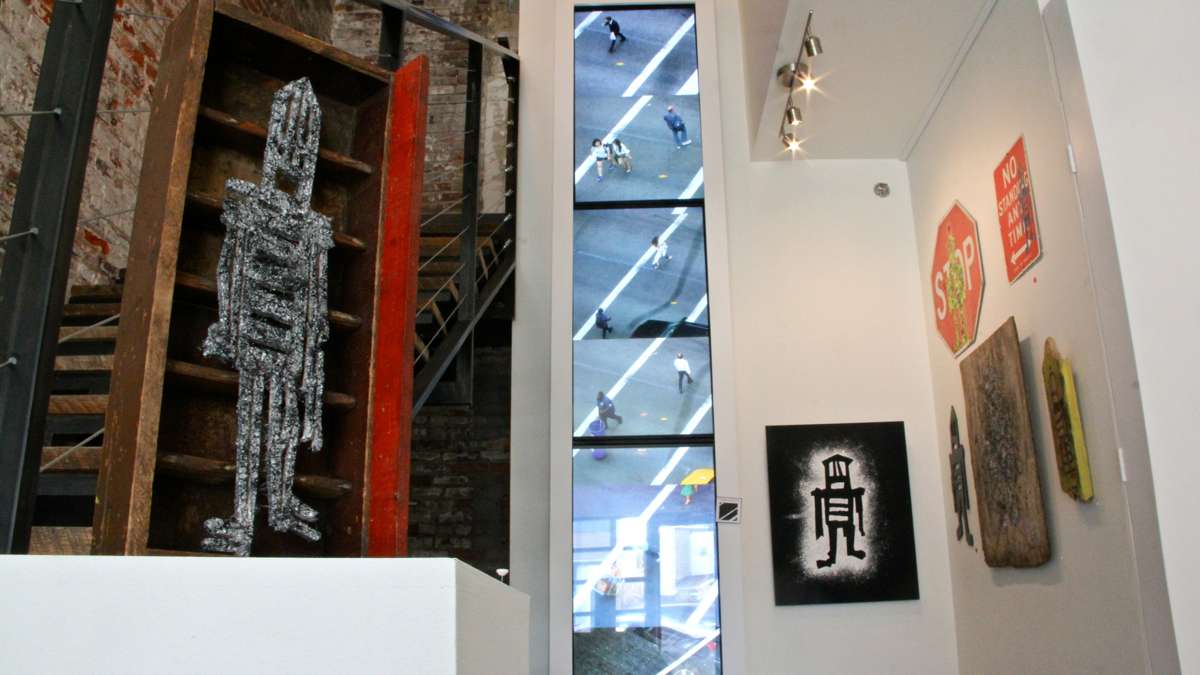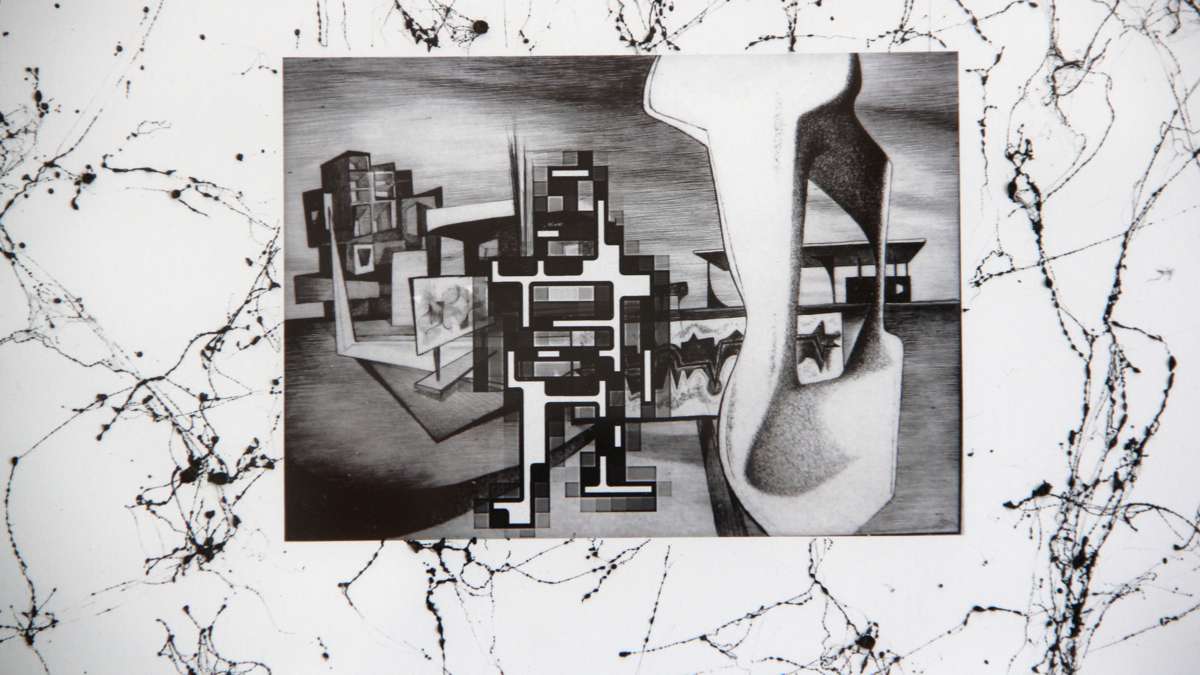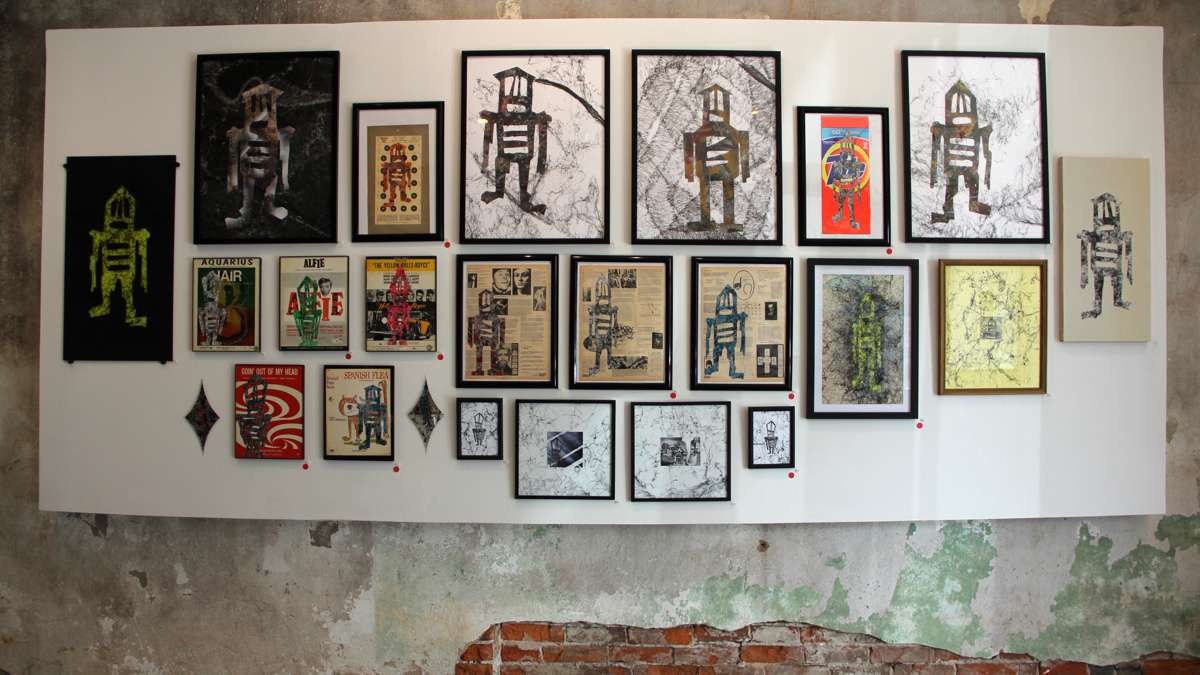Mysterious ‘Stikman’ artist’s iconic street figures on display at Fishtown gallery
An exhibition of work by Stikman, the anonymous street artist, is now on display at LMNL gallery in Fishtown. While he (or she?) identifies himself only as Stikman and will not meet with reporters, he has agreed to answer our questions via email.
If you don’t know Stikman, you still know Stikman.
The little stick figure is seemingly ubiquitous on the streets of Philadelphia, New York, and other cities. An anonymous artist applies the figure directly onto street asphalt. The little man with a shortened leg appears in the tarmac at crosswalks, near intersections, and around pedestrian areas.
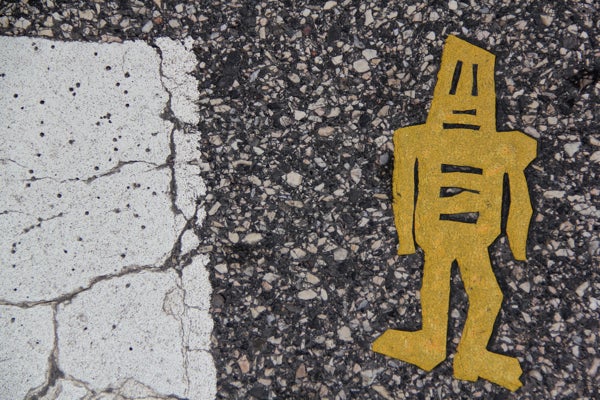 (Emma Lee/WHYY)
(Emma Lee/WHYY)
Like the infamous Toynbee Tiles — tiles made anonymously with a cryptic message, embedding in asphalt — the Stikman is stamped with mystery. For decades the nameless artist has been working and re-working the same figure.
Unlike the Toynbee tiler, Stikman’s author has gone public. Sort of. His work is now on display at LMNL gallery, a Fishtown exhibition space maintained by Bluecadet, an interactive media accompany. The pieces on display all feature the Stikman figure, but conceived as gallery art. While the street appears in the show as a traffic cone, a police barricade, and scrap wood, most pieces are framed and clearly meant to hang on a wall. They include the Stikman silk screened on sheet music, Stikman inked on pulpy, handmade paper, and Stikman reworked in a range of drawing styles.
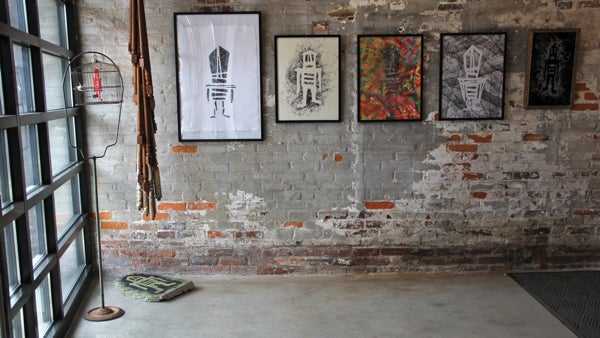 (Emma Lee/WHYY)
(Emma Lee/WHYY)
While he (or she?) identifies himself only as Stikman and will not meet with reporters (even his curator spent months coordinating the show without a face-to-face meeting) he has agreed to answer our questions via email.
This exchange has been lightly edited.
PC: The Stikman image looks a little like tribal- or native art, it’s obviously involved with street art, and in the show I see you rework the figure in several different styles. Where does the basic figure of Stikman come from?
SM: In 1989 I found a plaster plaque at a flea market. It is about 24 inches by 10 inches and about 1 inch thick. Someone had stuck sticks into the soft plaster to make an impression that was shaped like a man, but the sticks were all gone, all was left was the impression. So my original concept was that the sticks had escaped this piece of plaster and moved out into the world and now they all are wondering around as a unified force able to take various shapes and travel wherever he wanted to go. I was also fascinated by the negative space that was left in the visual field of the plaque. I felt like it was similar to the dark matter that is present throughout the universe.
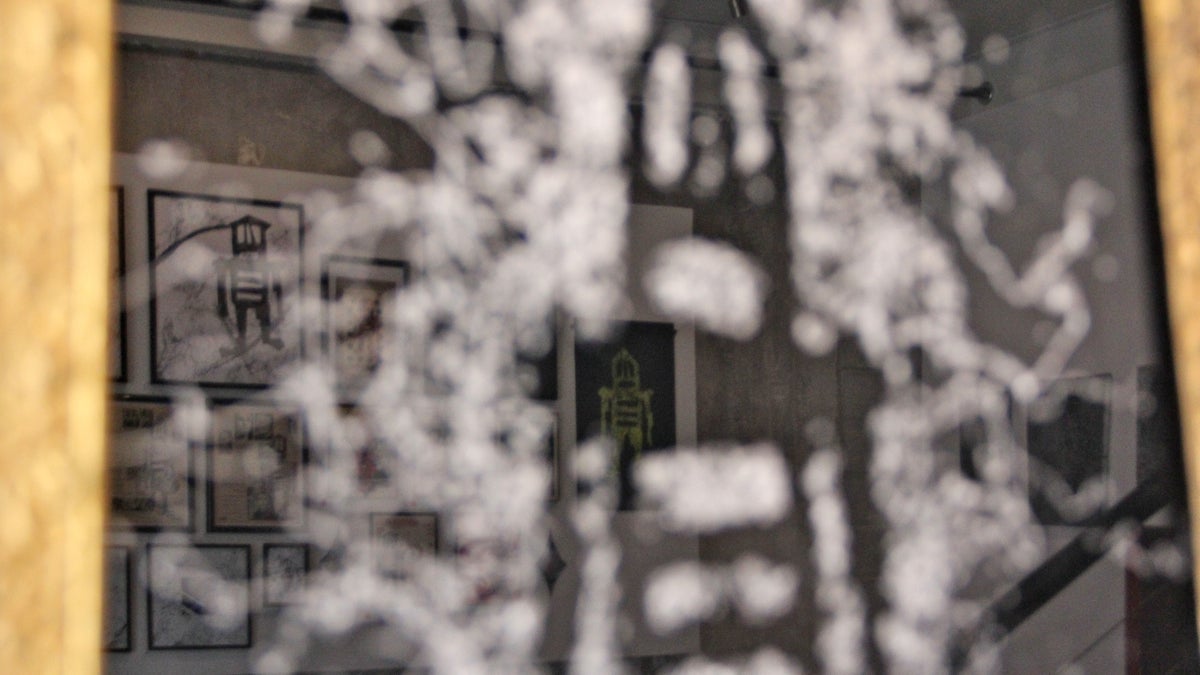 (Emma Lee/WHYY)
(Emma Lee/WHYY)
Why does this figure work for you? Are there technical, aesthetic, and/or artistic meanings inherent in this figure that keep you working with it?
I have found that, as with most artistic projects, I have been carried along on a journey of discovery and curiosity. As long as this remains true, I will continue to enjoy the ride and share it with the other people who seem to also enjoy it.
Having seen Stikman so often in the street, it’s a little surprising to see how you have reworked the image in the gallery at LMNL — as a digital pixilated Stikman, or a scribble-line Stikman, or Stikman applied to sheet music covers. Do you see Stikman taking on different meanings when applied to gallery pieces, versus street asphalt?
I urge you to look up Stikman at the Brooklyn Street Art blog and the Flickr Stikman group pool of photos. I have produced many more thousands of installations that do not look like the tarmac figures. … That said, the work you see in a gallery is somewhat different from what you would see in public spaces. I rely heavily on spontaneity and improvisation in both my studio work and my street work. But to use a music analogy, my pieces you see in this gallery exhibit are like music albums that are constructed as a linear package to be taken in as a composition. My work on the street is more like a concert by Miles Davis, full of improvisation and urban grit. Drawing on the familiar and accenting it with the surprising spark.
 (Emma Lee/WHYY)
(Emma Lee/WHYY)
The way you apply the figure directly onto the asphalt seems akin to the Toynbee Tiles. The two sometimes appear near each other in the street. Are you at all influenced by or involved with the Toynbee tiler?
I have a great deal of respect for the Toynbee tile project, and I have been fascinated by it for a long time. I am unwilling to relate any information I have about the tiler. Except for the obvious sharing of the same public space, there is very little common ground around the two projects. They each have a very different aesthetic and composition, although some may say they share a sense of the power of mystery. Curiosity is a doorway into the mind, and the viewers’ mind is my favorite place to install my work.
A colleague of mine noticed — a couple of years ago — a Stikman appeared in the asphalt almost immediately after a car accident involving a pedestrian injury had occurred, in the same spot. A Stikman was placed near the small bloodstain. How do you choose locations to apply the Stikman figure?
I have heard many interpretations of the tarmac figures that relate to instances on the streets, etc. I am afraid my system is more random than that. I use chance and spontaneity in much the same way Marcel Duchamp or John Cage might. Whatever people see in what I do is precisely what they think they see.
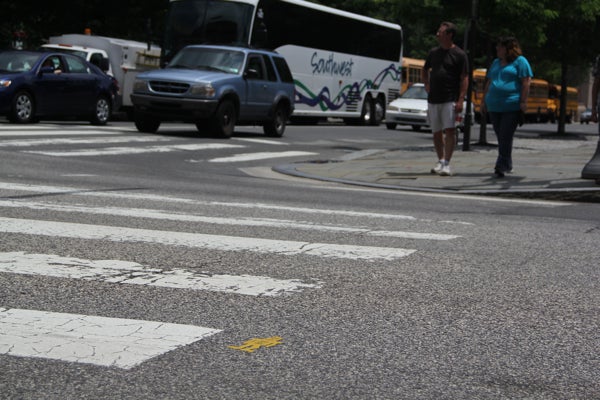 (Emma Lee/WHYY)
(Emma Lee/WHYY)
The curator at LMNL, R.J. Rushmore, tells me you do not like to talk publicly about your art, and you are reluctant to reveal yourself as the creator of Stikman (which is why were are talking via email). Why is it important to remain anonymous?
I believe that the art I create should speak for itself. Sometimes I have intention in what I create, and sometimes I have no idea why it exists. That is part of the journey. The revelations make for sweet rations in a hungry world.
Sometimes I make something I think is extraordinary and nobody else responds to it; sometimes I make something I see as not so much, and people flock to it. But it all has its own life and sings its own tune. It does not need me to be the front man.
peace and love sm
WHYY is your source for fact-based, in-depth journalism and information. As a nonprofit organization, we rely on financial support from readers like you. Please give today.



